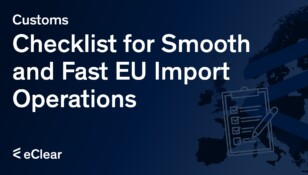Microsoft’s widely used Excel is ubiquitous across all industries. It continues to be used by government agencies, law firms, investment banks, research labs, academic institutions, non-profit organisations and many others. The list goes on and on, encompassing almost every organisation involved in the application or manual entry of data.
Sure, Excel is a giant in spreadsheets. But there is no denying the problems this tool causes when the human factor and its tendency to make mistakes are considered: There is talk of major and minor inconveniences, financial losses and damage to reputations were further consequences – up to bankruptcies and legal sanctions are the horror stories that flank this oh-so-formidable tool.
During the corona pandemic, 16,000 COVID-19 test results were lost in the UK due to a lack of basic data controls. Just like that! Scientists even renamed 27 human genes to prevent Excel from misinterpreting their symbols as dates – a sufficiently documented frustration with spreadsheet software. There are also countless stories of companies and organisations that suffered significant financial losses due to entirely avoidable human errors.
The back office is at the centre
The rise of machines brings some significant operational advantages over humans, at least in running algorithms and analysing big data.
Automated tools can help operations and sales teams align around cash flow requirements and supply chain realities. Through technology, finance teams are empowered to be strategic in their roles and responsibilities as business people more broadly, rather than the narrower role of accountants.
Surveys indicate that under half of B2B Software-as-a-Service (SaaS) solution providers still need to replace their manual processes. This means that there is an excellent opportunity for companies to drive growth through digitalisation tools necessary for business operations.
Promote sales momentum
As digital payment platforms and solutions continue to penetrate CFO offices, expect to see – across all industries – increasing integration of automated solutions designed to drive revenue momentum and eliminate avoidable errors without sacrificing speed.
The trend is clear, with companies of all sizes and business types interested in consolidating all non-payroll expense management into one automated system. The rise of no-code technologies will drive this digital transformation – as the game-changing ease of integration makes these tools more attractive.
Omnichannel Transaction Dashboard
For e-commerce, our financial dashboard SPOT® is an Excel alternative. Instead of being spread across several tables or reports, SPOT® brings together all of a trader’s turnover, sales, and tax data in a clear and intuitive dashboard. Real-time monitoring enables the visualisation of the markets and products with the highest turnover. — Thanks to the Automated VAT Audit and Reporting – AVATAR® for short – VAT rates that do not even apply in the destination country become apparent. In this way, companies retain complete control over key figures and business KPIs and reliably identify compliance requirements.
Source: pymnts.com







